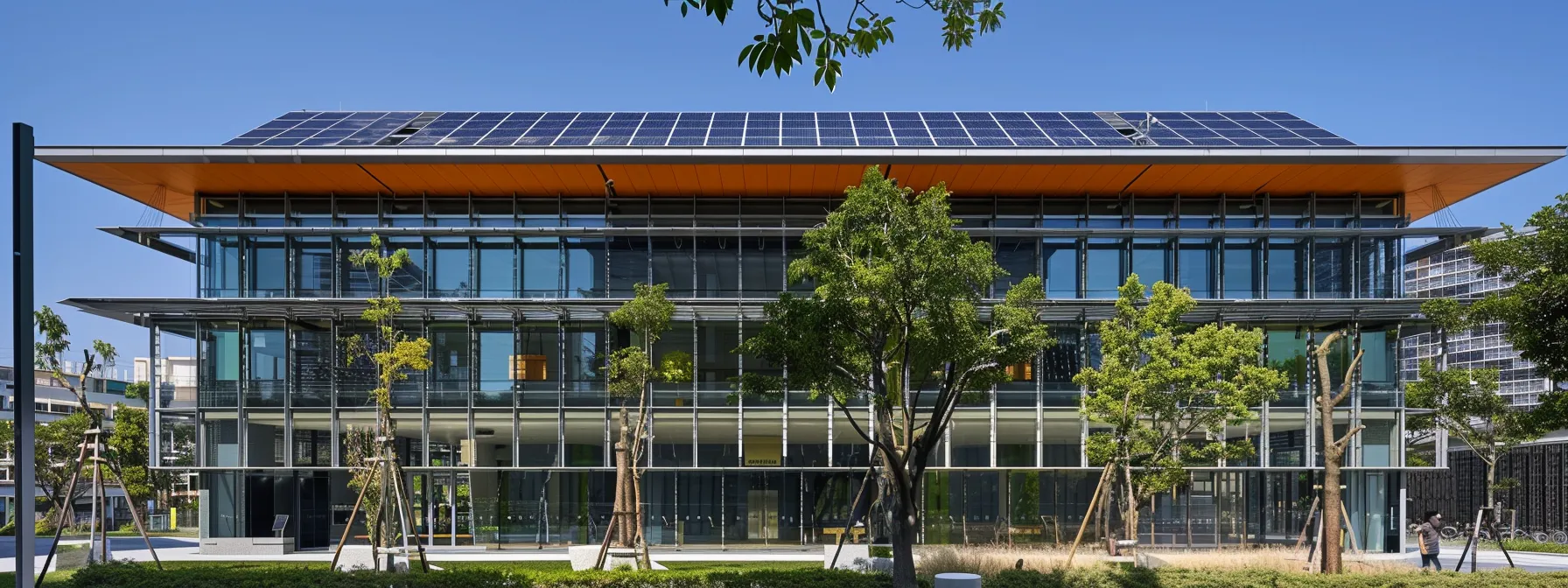In the quest for energy independence, many homeowners and businesses are turning to solar installations as a viable solution. With climate change pressing on global resources, tailored solar power innovations offer a pathway to sustainable energy. This article will explore customized solar power solutions for homes and businesses, the integration of solar energy with smart grid systems, and the challenges faced in solar adoption. Readers will gain insights into maximizing their return on investment while contributing to a greener future, addressing common concerns about the effectiveness and affordability of solar energy.
Key Takeaways
- Assessing energy needs is crucial for effective solar power integration in homes and businesses
- Selecting optimal solar technologies maximizes energy output and enhances system efficiency
- Understanding available incentives can significantly reduce the overall cost of solar installations
- Community engagement fosters a collective commitment to sustainability and drives solar adoption
- Collaborating with professionals ensures tailored solar solutions meet specific energy requirements effectively
Implementing Customized Solar Power Solutions in Homes

Implementing customized solar power solutions in homes begins with assessing household energy needs for effective solar integration. This involves understanding energy consumption patterns and identifying potential incentives for homeowners. Selecting optimal solar technologies, including efficient solar panels and charging stations, ensures compatibility with existing electrical wiring and maximizes energy output. These steps are crucial for achieving sustainable energy solutions tailored to individual residential requirements.
Assessing Household Energy Needs for Solar Integration
Assessing household energy needs is a critical first step in implementing customized solar power solutions. Homeowners should evaluate their energy consumption patterns, taking into account factors such as the size of the roof and whether it is a flat roof, as these elements influence the installation of photovoltaics. Understanding these needs allows for the selection of the right solar technology that maximizes energy output while ensuring compatibility with existing electrical systems.
Additionally, homeowners can explore available incentives, such as tax credits, which can significantly reduce the overall cost of solar installation. By accurately assessing energy requirements and leveraging financial incentives, homeowners can make informed decisions that lead to sustainable energy solutions tailored to their specific circumstances. This approach not only enhances energy efficiency but also contributes to long-term savings and environmental benefits.
Selecting Optimal Solar Technologies for Residential Use
Selecting optimal solar technologies for residential use is essential for homeowners aiming to implement a photovoltaic system that meets their energy needs. Homeowners should consider various options, such as high-efficiency solar panels and battery storage systems, which provide backup power during outages. This combination not only enhances energy independence but also contributes to a more sustainable energy future by reducing reliance on utility sources.
When evaluating solar technologies, owners must assess their specific energy consumption patterns and available roof space. For instance, integrating smart inverters can optimize energy production and consumption, ensuring that the photovoltaic system operates at peak efficiency. By making informed choices about solar technologies, homeowners can achieve significant long-term savings while supporting their commitment to sustainable energy solutions:
- Evaluate energy consumption patterns.
- Consider high-efficiency solar panels.
- Incorporate battery storage for backup power.
- Assess available roof space for installation.
- Integrate smart inverters for optimal performance.
Homes embraced solar power, finding savings and light. Now, businesses stand ready to harness tailored innovations that promise even greater rewards.
Advancing Tailored Solar Innovations for Businesses

Evaluating the energy demands of commercial facilities is essential for integrating solar power into corporate operations. Businesses can benefit from understanding their energy consumption patterns, which aids in selecting appropriate energy storage solutions. Additionally, considerations such as depreciation and warranty options enhance the value of solar investments, ultimately improving customer satisfaction and operational efficiency.
Evaluating Energy Demands of Commercial Facilities
Evaluating the energy demands of commercial facilities is vital for effective solar power integration. Businesses must analyze their energy consumption patterns, measured in watts, to determine the appropriate size and type of solar system needed. This assessment not only helps in selecting the right renewable energy solutions but also ensures that the system can efficiently convert direct current into usable energy, maximizing overall performance.
Understanding energy needs also allows businesses to explore options like net metering, which can provide financial benefits by allowing them to sell excess energy back to the grid. By establishing a clear contract with solar providers, companies can secure favorable terms that enhance their investment in solar technology. This strategic approach leads to improved operational efficiency and long-term savings:
- Analyze energy consumption patterns in watts.
- Determine the appropriate solar system size.
- Explore net metering options for financial benefits.
- Establish contracts with solar providers for favorable terms.
- Maximize the conversion of direct current into usable energy.
Incorporating Solar Power Into Corporate Operations
Incorporating solar power into corporate operations offers businesses a strategic advantage in the energy industry. By investing in solar energy solutions, companies can significantly reduce their operational costs and improve their sustainability profile. Understanding the payback period of solar installations is essential, as it allows businesses to forecast their return on investment and make informed decisions that align with their financial goals.
Working with certified professionals, such as those from the North American Board of Certified Energy Practitioners, ensures that businesses implement effective solar power systems tailored to their specific needs. These experts can guide companies through the complexities of solar energy integration, helping them navigate incentives and financing options. This approach not only enhances energy efficiency but also positions businesses as leaders in the transition to renewable energy, ultimately benefiting their bottom line and the environment.
Businesses are finding new ways to harness solar energy. Next, the focus shifts to how this energy connects with modern smart grid systems, creating a powerful synergy.
Integrating Solar Energy With Modern Smart Grid Systems

Understanding the role of smart grids in solar integration is essential for optimizing electric power distribution. Tailored solar solutions, such as Enphase Energy systems and Tesla Powerwall batteries, enhance grid efficiency by managing energy flow effectively. This section will explore how SolarEdge technology and electric generators contribute to a more resilient energy infrastructure, ensuring reliable power for both residential and commercial applications.
Understanding the Role of Smart Grids in Solar Integration
Smart grids play a crucial role in the integration of solar energy by optimizing the distribution of electricity generated from sunlight. These advanced systems enhance the efficiency of commercial solar installations by effectively managing solar irradiance and ensuring that energy produced is utilized efficiently. By incorporating smart technology, businesses can monitor their energy consumption in real-time, allowing for better decision-making regarding energy use and potential savings.
The use of solar inverters within smart grids is essential for converting direct current from solar panels into usable alternating current for homes and businesses. This technology not only maximizes energy output but also facilitates the leasing of solar systems, making solar energy more accessible to a wider audience. By leveraging smart grid capabilities, companies can enhance their energy resilience, reduce operational costs, and contribute to a more sustainable energy future.
Enhancing Grid Efficiency With Tailored Solar Solutions
Tailored solar solutions, such as solar carports, significantly enhance grid efficiency by optimizing energy consumption and reducing reliance on traditional power sources. These innovative structures not only provide shade for vehicles but also generate clean energy, contributing to a more sustainable energy landscape. By integrating systems like SolarAI Solutions, businesses can monitor their energy usage in real-time, allowing for better management of consumption and cost-effective energy strategies.
Working with a qualified electrician to install these tailored solar solutions ensures that the systems are designed to meet specific energy needs while maximizing output. This collaboration can lead to a reduction in overall energy prices, making solar energy a more attractive option for both residential and commercial users. By adopting these advanced technologies, organizations can improve their energy resilience and support the transition to a greener future:
- Utilize solar carports for dual functionality.
- Implement SolarAI Solutions for real-time energy monitoring.
- Collaborate with electricians for optimal system design.
- Reduce energy prices through efficient consumption management.
- Enhance energy resilience with tailored solar technologies.
The promise of solar energy shines bright, yet shadows linger. As the world moves forward, it must confront the hurdles that stand in the way of widespread adoption.
Addressing Challenges in Solar Power Adoption

Navigating regulatory requirements for solar installations and overcoming technical barriers are essential for successful solar power adoption. Understanding Finance Options available through platforms like EnergySage can ease the financial burden, while addressing integration with the electrical grid ensures efficient energy development. This section will provide practical insights into these challenges, guiding businesses and homeowners toward effective solar solutions. Contact SolarAI for expert assistance in overcoming these hurdles.
Navigating Regulatory Requirements for Solar Installations
Navigating regulatory requirements for solar installations is essential for homeowners and businesses looking to adopt solar energy solutions. Understanding local zoning laws, building codes, and permitting processes can significantly impact the installation timeline and overall project costs. For instance, integrating advanced technologies like charge controllers and lidar can streamline the assessment of site suitability, ensuring compliance with voltage regulations and enhancing system efficiency.
Additionally, potential fees associated with permits and inspections can vary widely, making it crucial for stakeholders to budget accordingly. Engaging with local authorities early in the planning process can help clarify requirements and avoid unexpected delays. By proactively addressing these regulatory challenges, individuals and businesses can facilitate a smoother transition to solar energy, ultimately supporting their commitment to sustainable practices:
- Understand local zoning laws and building codes.
- Utilize charge controllers and lidar for site assessments.
- Budget for potential fees related to permits and inspections.
- Engage with local authorities early in the planning process.
- Proactively address regulatory challenges for smoother installations.
Overcoming Technical Barriers in Solar Deployment
Overcoming technical barriers in solar deployment requires a strategic approach to energy conservation and system design. Utilizing advanced technologies like 3D modeling can significantly enhance the planning phase, allowing for precise visualization of solar cell placements and wiring configurations. This proactive method not only streamlines installation but also ensures that the system operates at maximum efficiency, addressing common challenges faced by homeowners and businesses alike.
Additionally, addressing issues related to wiring and compatibility with existing electrical infrastructure is crucial for successful solar integration. By collaborating with experienced professionals, stakeholders can identify potential obstacles early in the process, ensuring that the solar system is tailored to meet specific energy needs. This comprehensive approach not only mitigates technical challenges but also fosters a smoother transition to renewable energy solutions, ultimately supporting a more sustainable future.
The challenges of solar power adoption are real, but they are not the end of the story. As the industry evolves, new innovations in customized solar solutions are on the horizon, ready to reshape the future.
Anticipating Future Trends in Customized Solar Innovations

Monitoring emerging technologies in solar energy is essential for anticipating future trends in customized solar innovations. This includes advancements in low voltage systems, battery chargers, and community solar initiatives. Preparing for the evolution of renewable energy solutions, as highlighted by the National Renewable Energy Laboratory, ensures that stakeholders remain informed and ready to adopt effective strategies that enhance energy efficiency and sustainability.
Monitoring Emerging Technologies in Solar Energy
Monitoring emerging technologies in solar energy is vital for enhancing sustainability and optimizing energy production. Innovations such as advanced shading techniques and improved schematic designs allow for better integration of solar panels into various construction types. By adopting these technologies, homeowners and businesses can maximize their solar energy output while minimizing costs.
Furthermore, companies like SunPower are leading the way in developing high-efficiency solar panels that adapt to changing environmental conditions. These advancements not only improve energy efficiency but also contribute to a more sustainable future. Stakeholders should stay informed about these trends to ensure they are leveraging the best available solutions for their solar energy needs:
- Advanced shading techniques for optimal energy capture.
- Improved schematic designs for better integration.
- High-efficiency solar panels from leading companies.
- Focus on sustainability in solar energy solutions.
- Staying informed about emerging technologies.
Preparing for the Evolution of Renewable Energy Solutions
Preparing for the evolution of renewable energy solutions requires a comprehensive understanding of the structural elements involved in solar installations. Homeowners and businesses must consider factors such as roof pitch and rafter configurations, as these can significantly impact the efficiency of the energy system. By collaborating with professionals in electrical engineering, stakeholders can ensure that their solar setups are optimized for maximum energy capture and safety, including the integration of surge protectors to safeguard against electrical surges.
As the demand for tailored solar power innovations grows, it is essential to stay informed about advancements in technology and installation practices. For instance, understanding how different roof pitches affect solar panel placement can lead to better energy production outcomes. By proactively addressing these considerations, individuals and businesses can enhance their solar energy systems, ensuring they are well-equipped to meet future energy demands while contributing to a sustainable energy landscape.
The future of solar lies not just in innovation, but in how these advancements can be tailored to fit our lives. As customized solutions emerge, they pave the way for a deeper commitment to sustainability through practical solar practices.
Promoting Sustainability Through Tailored Solar Practices

Encouraging community participation in solar initiatives fosters a collective approach to sustainability. By educating consumers on the benefits of customized solar power, including power purchase agreements, stakeholders can optimize energy consumption and reduce costs. This section will explore how community engagement and tailored solutions enhance the effectiveness of solar energy practices, driving a more sustainable future.
Encouraging Community Participation in Solar Initiatives
Community participation in solar initiatives is vital for fostering a collective commitment to sustainability. By organizing local workshops and informational sessions, stakeholders can educate residents about the benefits of tailored solar power solutions, such as reduced energy costs and environmental impact. Engaging community members in discussions about solar energy not only raises awareness but also encourages collaborative projects, such as community solar farms, which can provide shared benefits to multiple households.
Moreover, creating partnerships with local organizations can amplify outreach efforts and enhance participation in solar programs. For instance, schools and community centers can serve as platforms for promoting solar energy education, helping to demystify the technology and its advantages. By actively involving the community in solar initiatives, stakeholders can build a supportive network that drives the adoption of renewable energy, ultimately contributing to a more sustainable future for all.
Educating on the Benefits of Customized Solar Power
Educating homeowners and businesses about the benefits of customized solar power is essential for driving the adoption of renewable energy solutions. Tailored solar systems not only meet specific energy needs but also maximize efficiency and cost savings. By understanding how customized solar power can reduce energy bills and increase property value, stakeholders can make informed decisions that align with their sustainability goals.
Workshops and informational sessions can effectively communicate the advantages of personalized solar solutions. These educational initiatives can cover topics such as available incentives, financing options, and the long-term benefits of solar energy. Engaging the community in discussions about customized solar power fosters a supportive environment that encourages participation in solar initiatives, ultimately promoting a greener future:
- Highlight the cost savings associated with tailored solar systems.
- Discuss available incentives and financing options.
- Emphasize the increase in property value from solar installations.
- Encourage community engagement through workshops and sessions.
- Foster a supportive environment for solar energy adoption.
Conclusion
Tailored solar power innovations play a crucial role in advancing sustainable energy solutions for both homes and businesses. By assessing energy needs and selecting optimal technologies, stakeholders can maximize efficiency and reduce costs while contributing to environmental sustainability. Engaging communities and educating consumers about the benefits of customized solar systems fosters a collective commitment to renewable energy. Embracing these innovations not only enhances energy independence but also positions individuals and organizations as leaders in the transition to a greener future.



